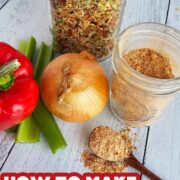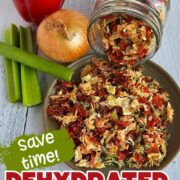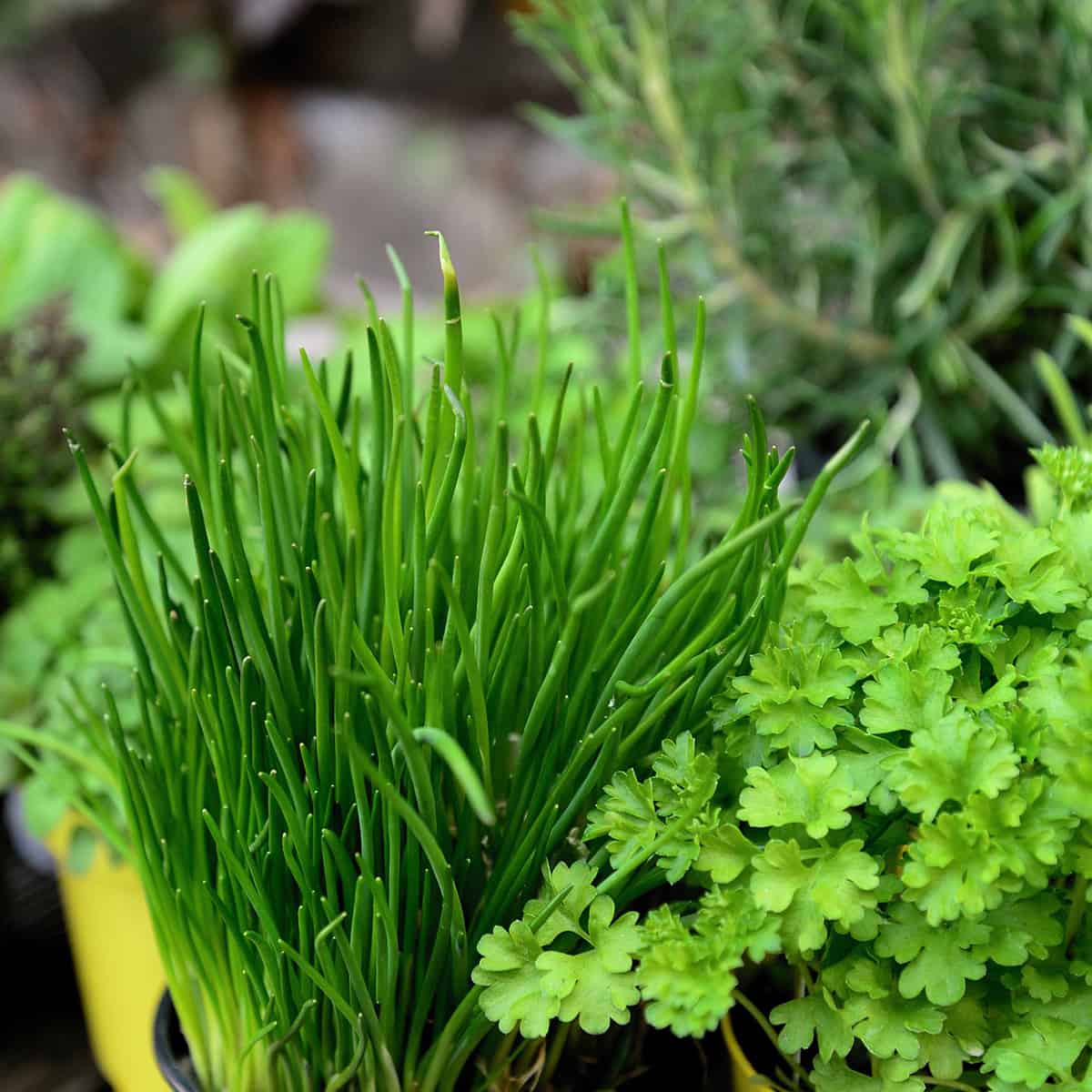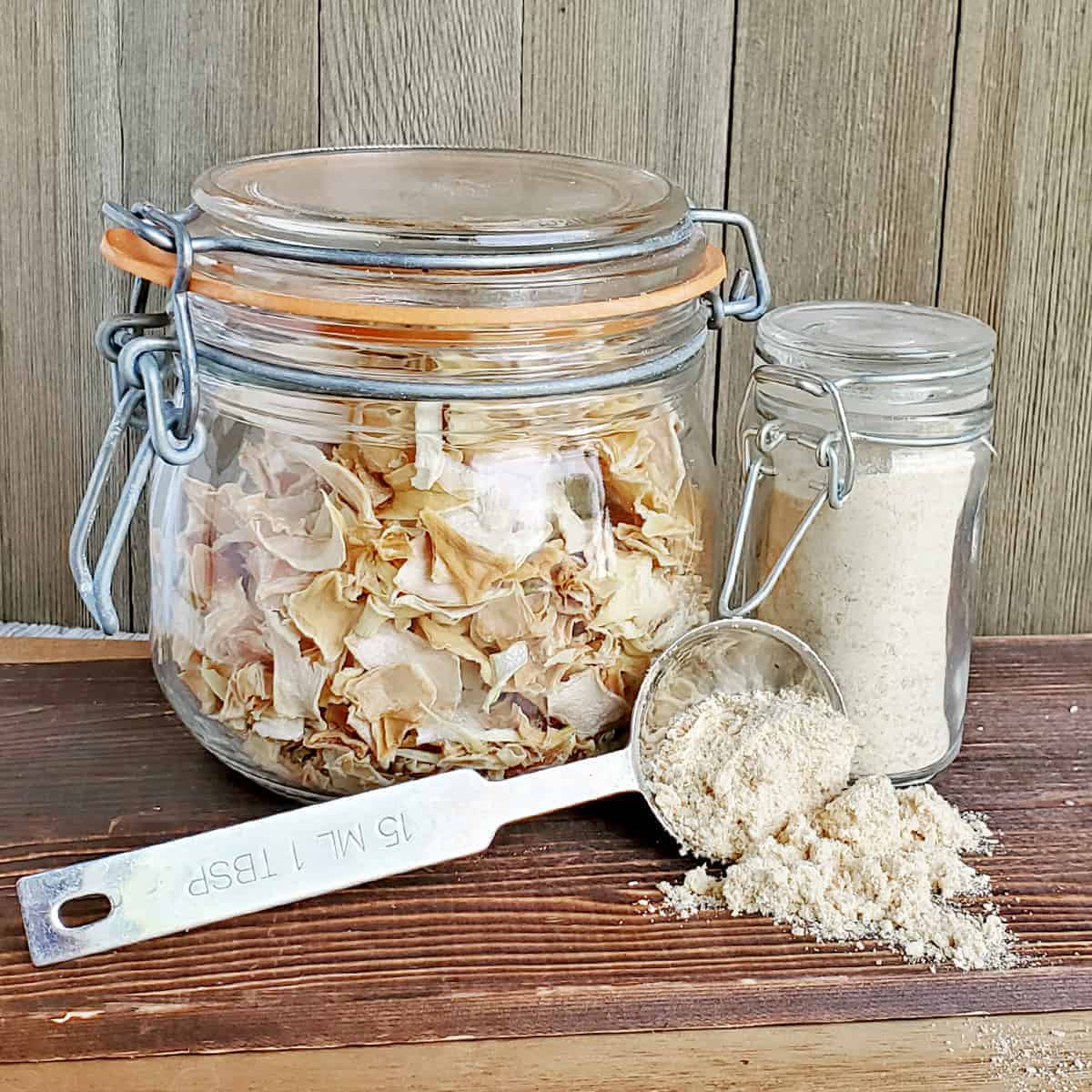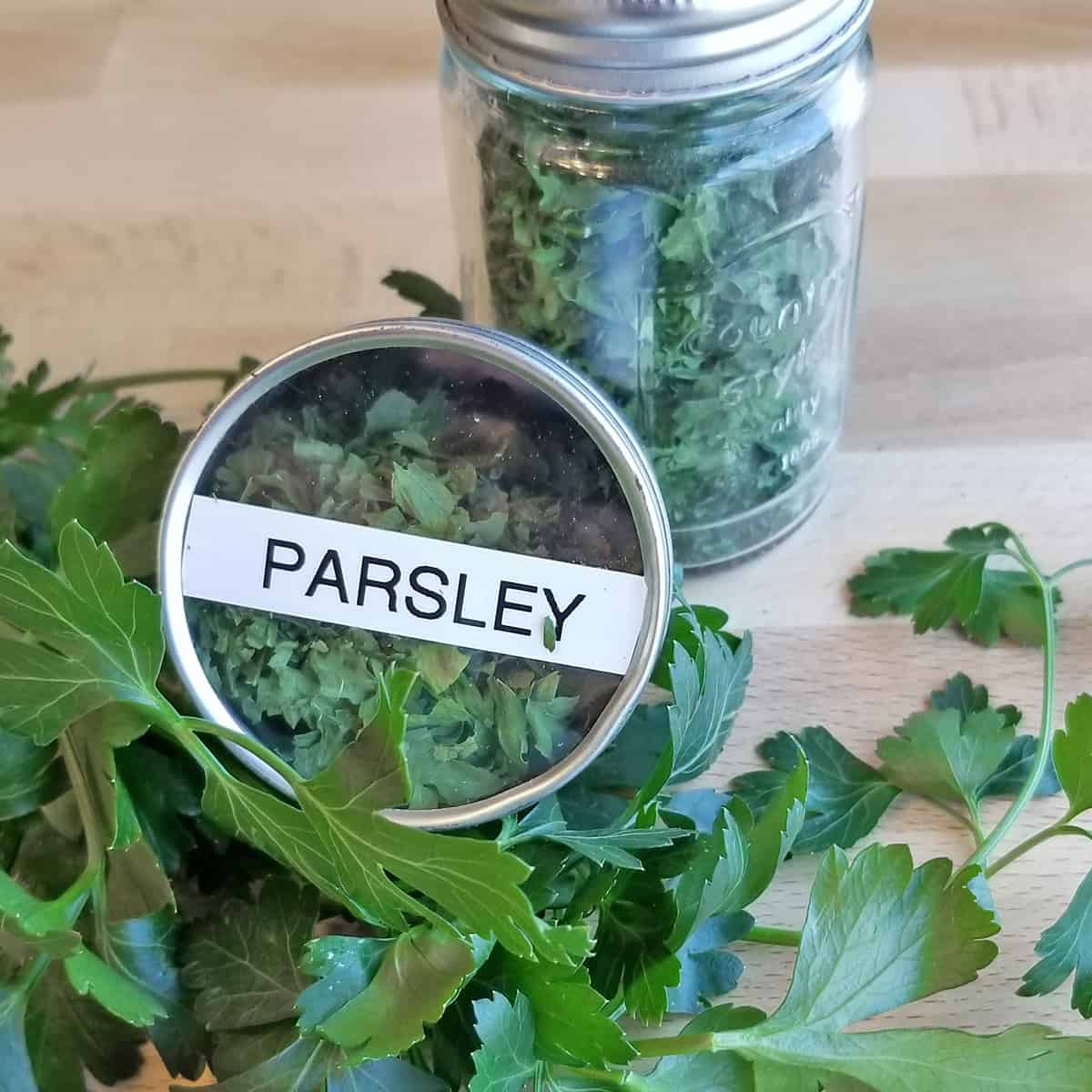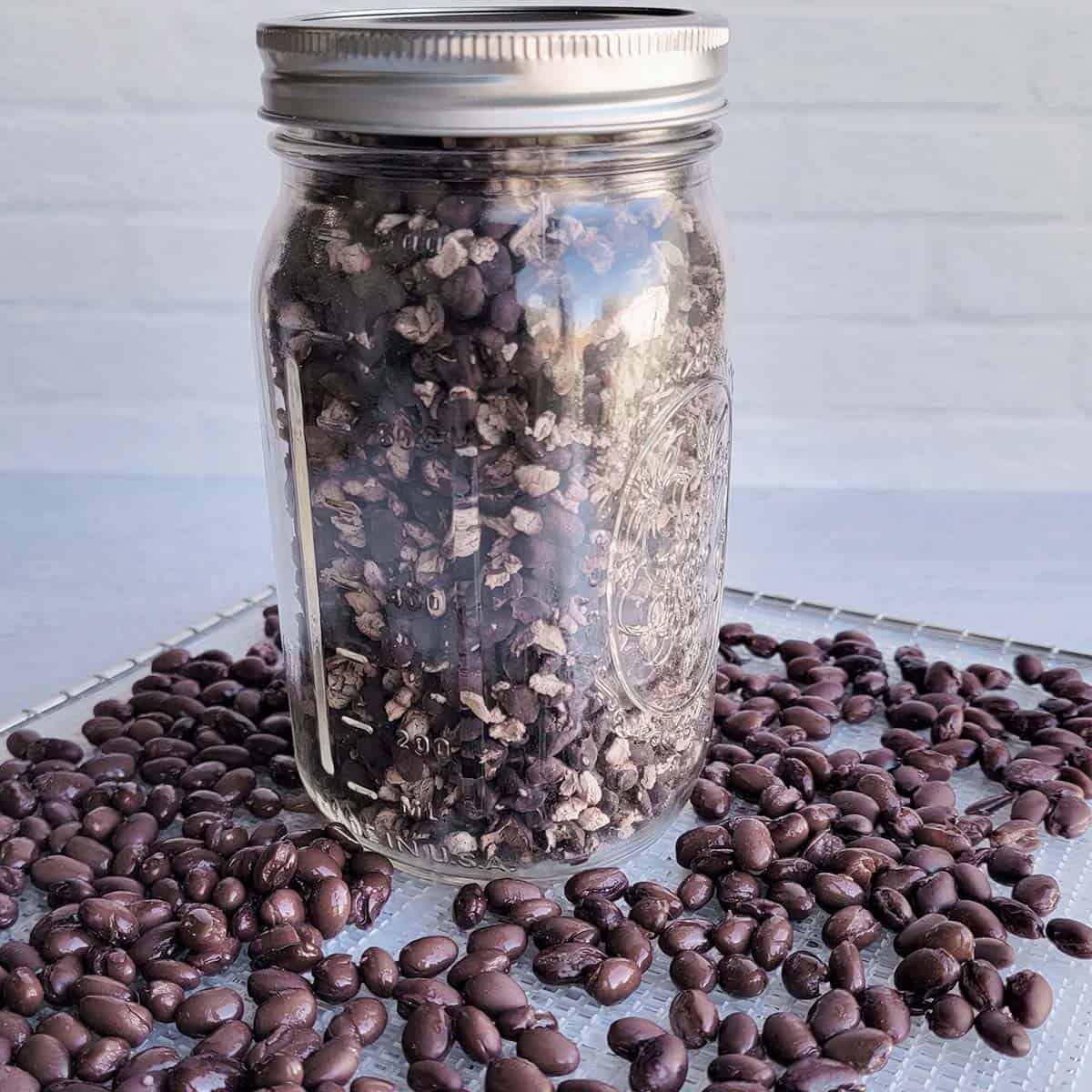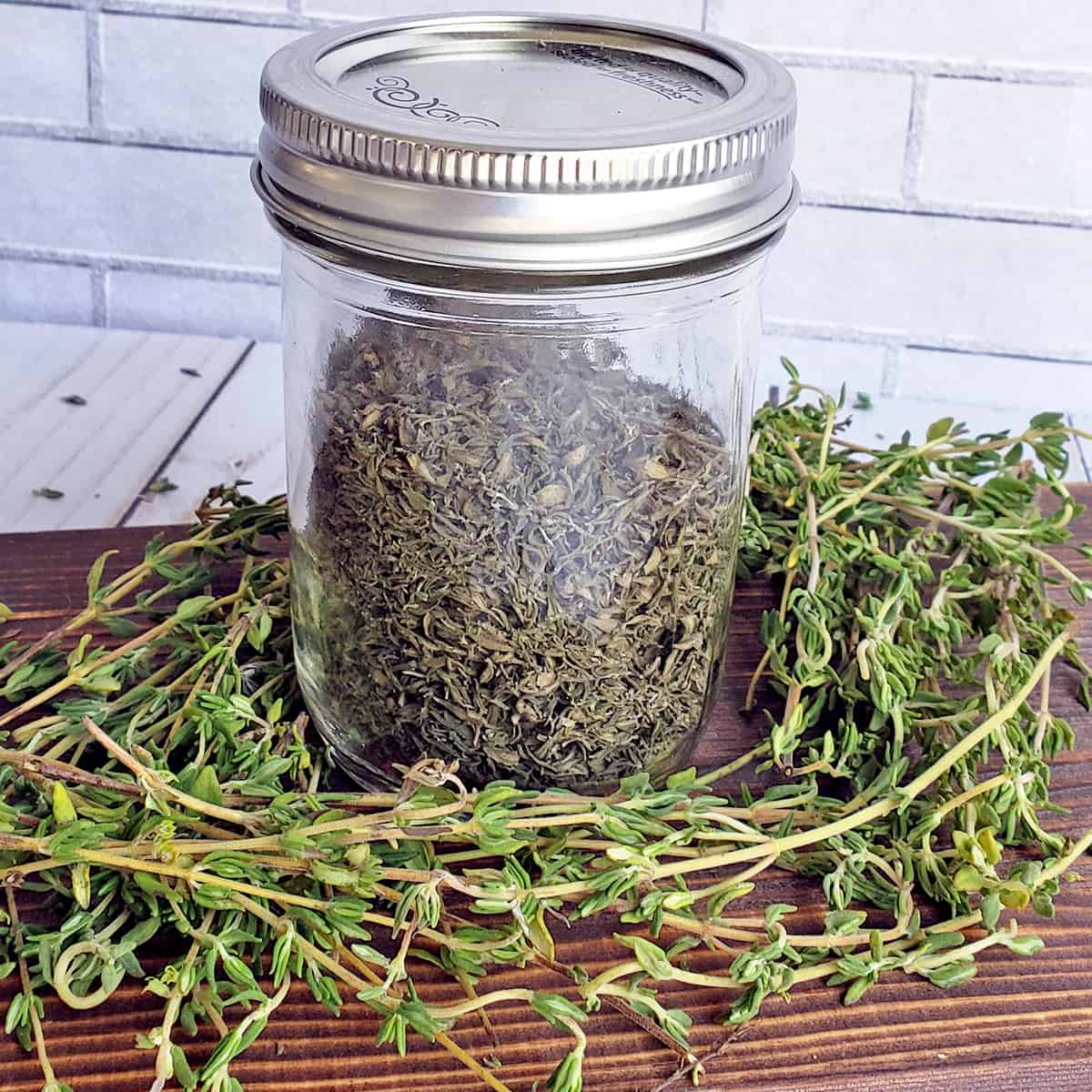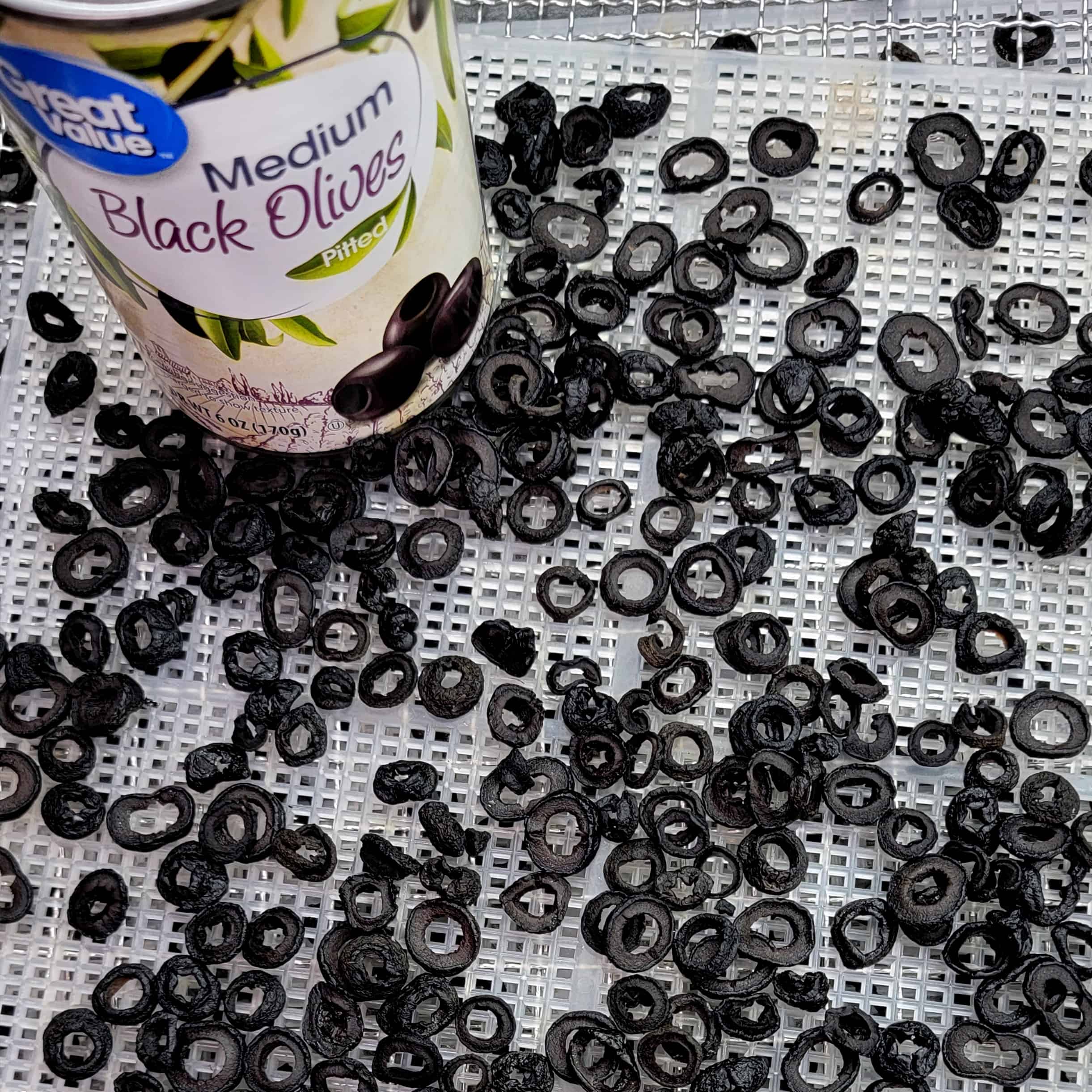Dehydrate the Holy Trinity
Making meals faster and easier comes when we can reduce the workload for preparing meals. Dehydrating the holy trinity to save prep time and freezer space makes this a dehydrating project you must try!
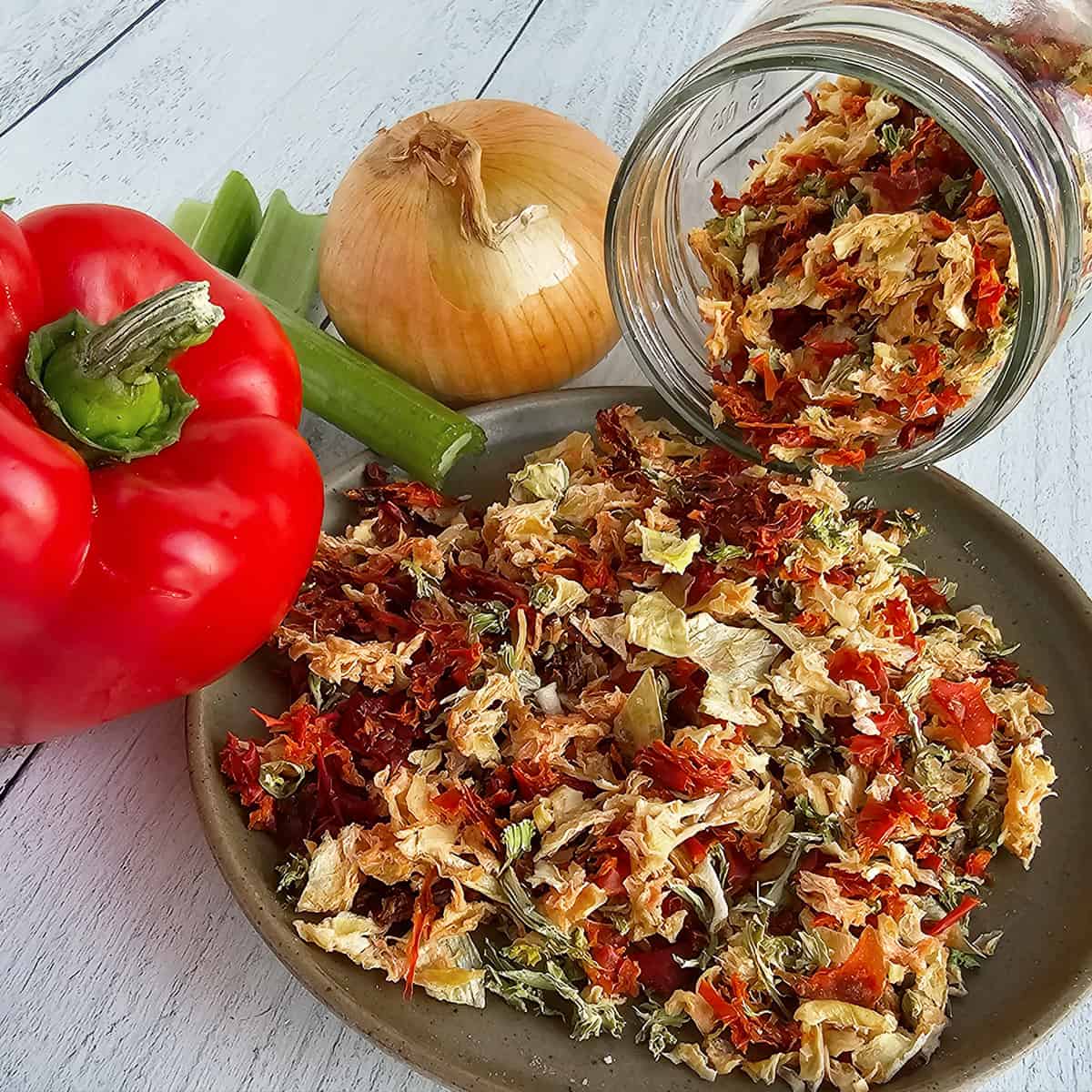
I love saving time in the kitchen, and doing mise en place is one of those chores that I want to save the most time on! Preparing the same aromatic base every night, like the holy trinity or mirepoix can be drudgery.
I found this way to make holy trinity shelf-stable and save me a ton of time on busy meal nights saved my sanity – and I know it can help you, too!
What is the Holy Trinity?
The ‘holy trinity’ is an aromatic blend that is a staple in Cajun and Creole meals (typically from Louisiana), and now in many dishes that we use every day!
Typically, it is 1 part green bell peppers, 1 part onion, and 1 part celery.
Then, it is lightly cooked as an aromatic in the skillet before adding other ingredients.
Holy Trinity vs. Mirepoix
The difference between the holy trinity and mirepoix is peppers (trinity) and carrots (mirepoix). The French mirepoix ratio is also different at 1 part celery, 1 part carrot, and 2 parts onion.
Learn More: How to Dry Mirepoix
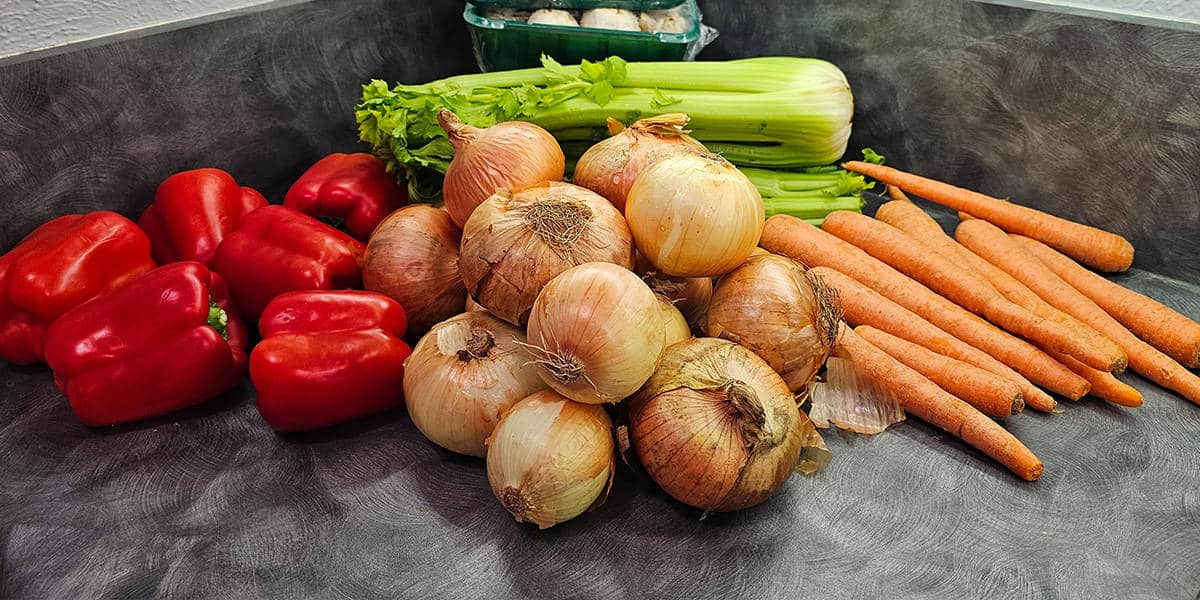
How to Make Dehydrated Holy Trinity
Quick Instructions: Dice or chop, dry at 125°F/52°C for approximately 8-12 hours.
Equipment
- Knife, vegetable chopper, or food processor
- Cutting board
- Dehydrator
- Storage container (mason or canning jar, airtight glass jar or mylar bags).
Ingredients
- Celery – some folks find that destringing celery (peeling the outside with a vegetable peeler to remove the strings) helps with the rehydrated consistency of celery.
- Onions – use whatever you have on hand. Yellow and white are more traditional than red or sweet.
- Green Bell Peppers – We opt for the red, orange, and yellow varieties because we find those flavors milder and prefer them to green. Well, we really dislike green a lot, if I’m honest.
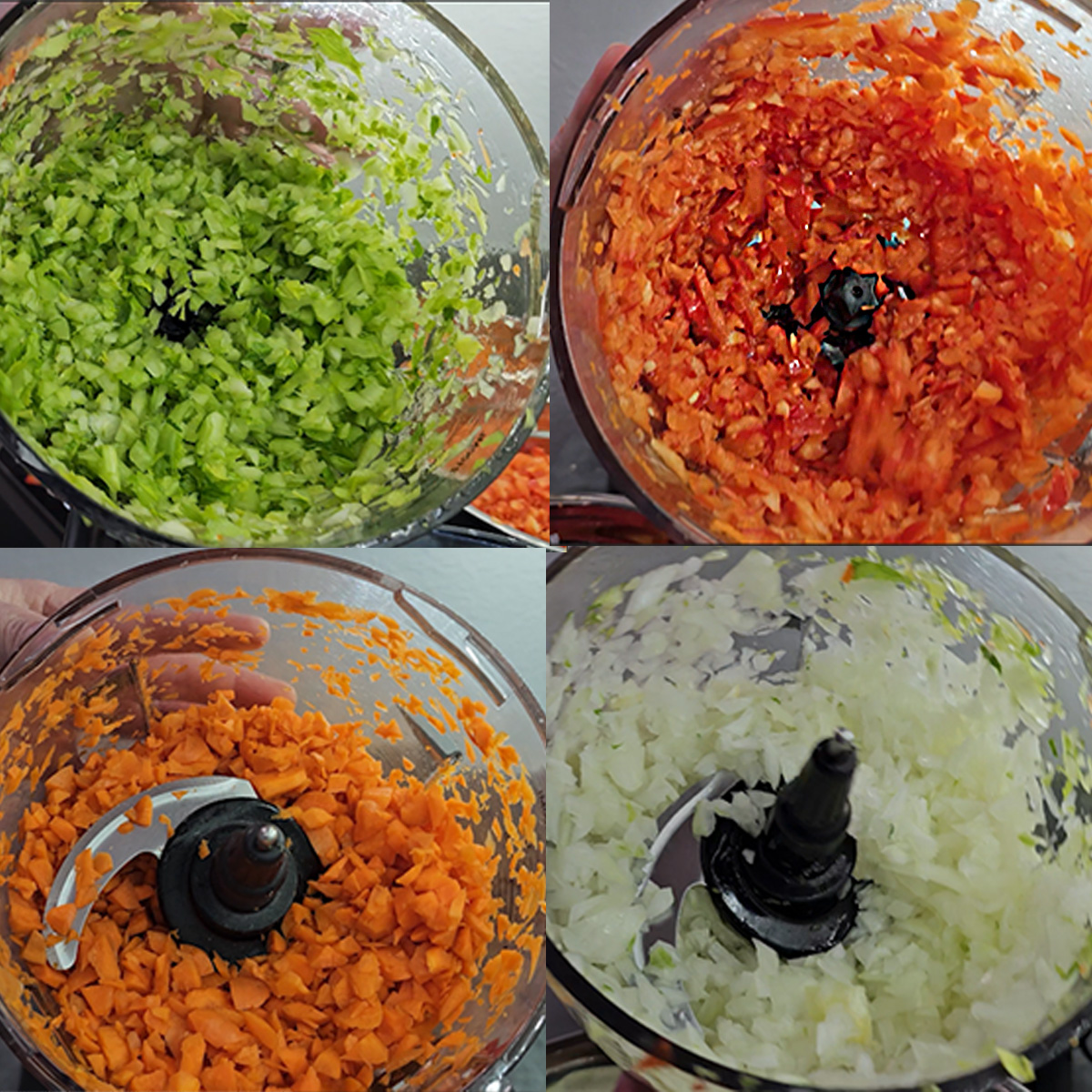
Instructions
- Prepare your food. You can dice, use a vegetable chopper, or process in a food processor.
- While blanching is typically recommended for carrots, it’s unnecessary for this project. See my tips below on the way to make it ‘instant’.
- Place onto your dehydrator racks and dry! The setting is 125°F / 52°C for 8-12 hours (approximately).
- Test for dryness. All pieces should be dry, hard, and not sticky.
- Condition.
- Store.
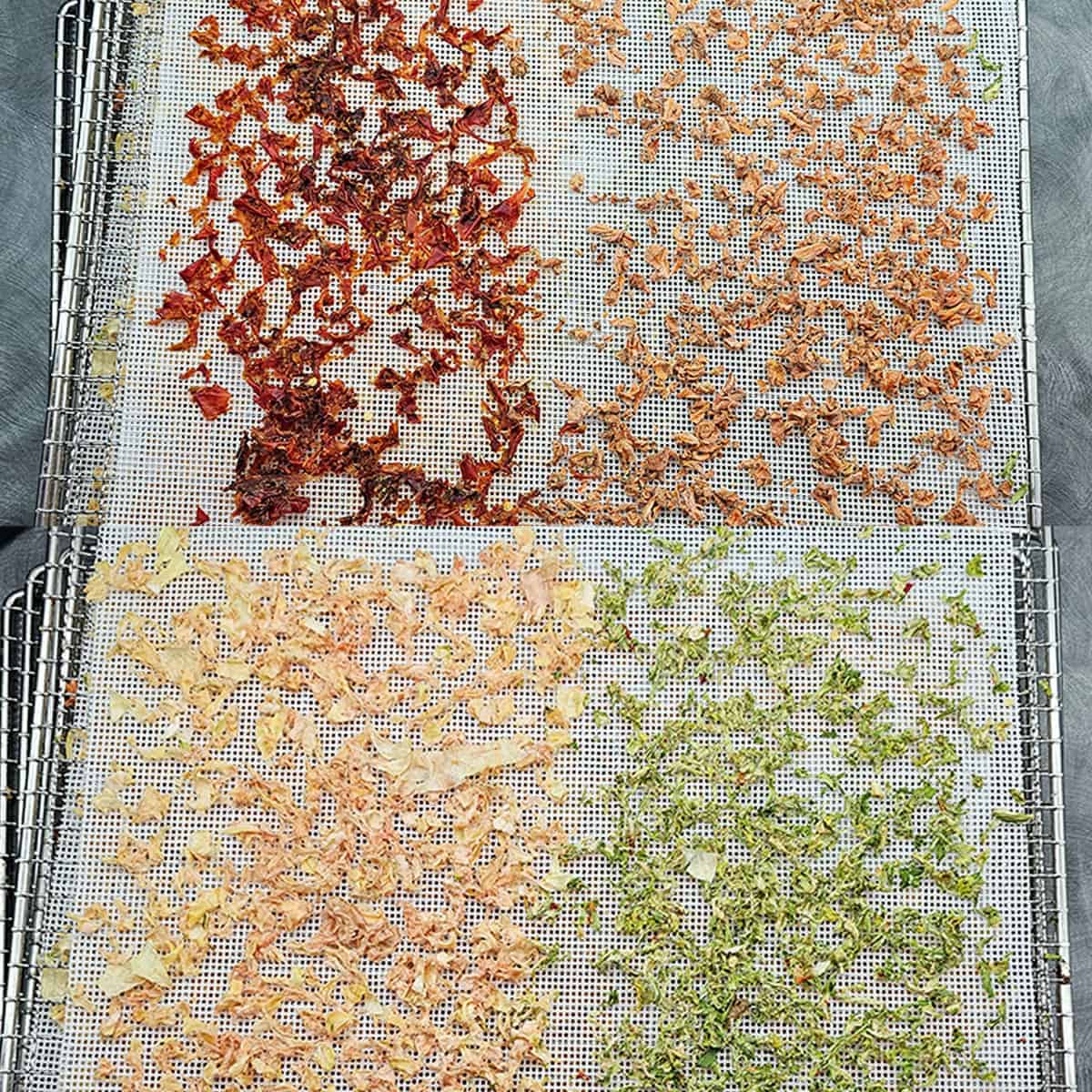
Final after of dehydrated Holy Trinity (including carrots from a combination with the Mirepoix dehydrating project).
As a note: bell peppers can caramelize in a dehydrator when they contain higher amounts of sugar. Red bell peppers tend to do it more than other colors.
Yield:
1 Cup of diced vegetables = 1/3 cup of dried vegetables = 1 tablespoon powder
This number will be an approximation based on the size of your original diced pieces.
How to Condition
- Place dried food into a jar to allow movement. Do not add moisture absorbers or any other desiccant.
- Shake once a day for 5-7 days.
- Look for signs of sticking, clumping, or moisture buildup.
- If you have clumping or sticking to the side of a jar, if it is removed with a gentle shake, it is fine.
- If it takes significant shaking to remove it or break it up, place back into the dehydrator to dry more.
- If you see mold of any kind, throw food away and sanitize the jar.
- Look for signs of sticking, clumping, or moisture buildup.
- Once complete, store in an airtight container in a dark, cool, dry place if possible.
How to Store
Dried holy trinity should be stored in an airtight container, such as a canning jar, in a cool, dark, dry place. As long as it is properly dried, conditioned, and stored in an appropriately sized airtight container, nothing else is necessary.
The shelf life of dehydrated holy trinity is optimally two years, but you may find it lasts longer if stored properly.
Alternatives:
While no additional storage aids are necessary for complete storage, you may choose one of these alternatives for storage:
- Add a moisture absorber to the jar if you live in a very humid environment and open your jar a lot. It will help reduce the newly introduced moisture that comes from opening.
- Vacuum seal your mason jars.
- Use mylar bags to store this in, and you may choose to include an oxygen absorber to add extra security to your storage.
Darcy’s Tips:
- Since there are texture issues, I make sure that I make pieces even smaller than typical so that they aren’t an issue while eating. I use a food processor to get small pieces instead of the typical diced ones.
- You can also mix all of the ingredients on your dehydrator trays to dry together instead of as separate ingredients to blend later.
- Try sweating your vegetables in a skillet (don’t caramelize them) to get a soft texture now that will give you more of an ‘instant’ use when rehydrated. This can be good for great meals-in-a-jar recipes that are more like ‘just add water’ recipes.
- Even bigger time saver – do this from the frozen seasoning blend you can get at local grocery stores! All the work has been done for you!
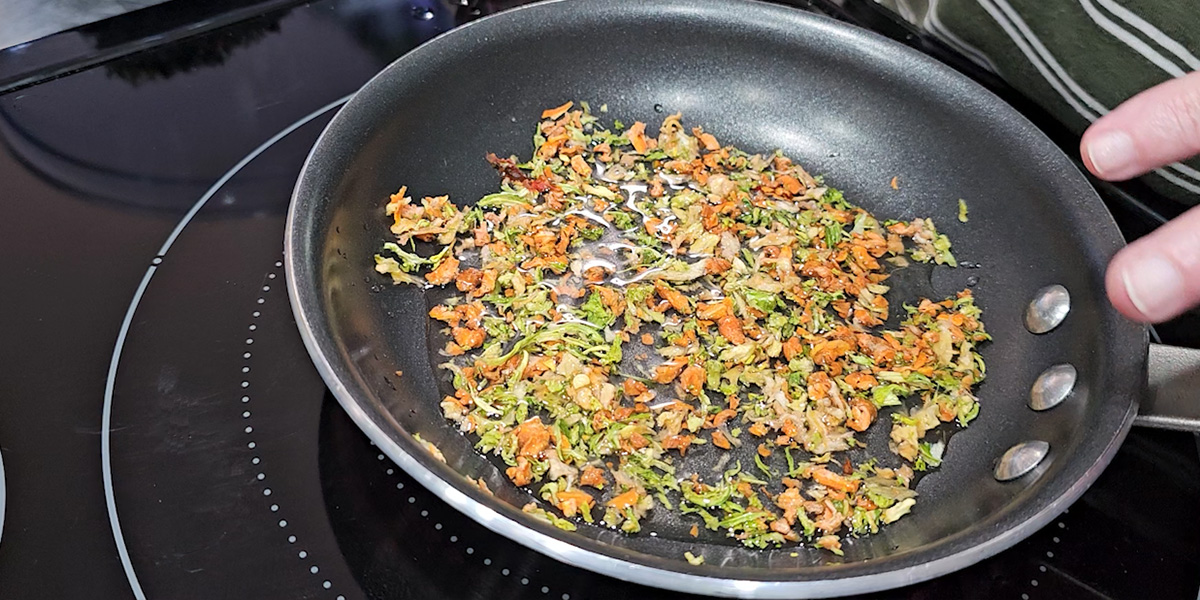
Rehydrating the Holy Trinity
Rehydrating dried holy trinity can be done in a couple of ways:
- Place the amount you need in a container of water and allow it to soak for about 15 minutes. Alternatively, you can allow it to soak overnight in the fridge or gently simmer it in a saucepan of water or broth if you don’t plan on using the next option.
- Place the amount you need into a skillet on a medium-low setting. Add some water or broth and allow the celery, onion, and peppers to absorb the water as they rehydrate slowly, then sweat (gentle cooking) to prepare for the meal. You may add any seasoning you like during this process, I like to add a little butter at this point.
To Use
Once rehydrated, you can use the holy trinity blend in any stovetop dish you make, even if it isn’t necessarily Cajun in origin.
Use 1/2 cup of the dehydrated blend to approximate what most recipes call for. You can adjust to your taste and the number of servings you need.
Ideas can include:
- Soup
- Stew
- Gumbo
- Stuffings
- Instant Rice Mixes
- Meals in a Jar blends
- Grind in your favorite spice grinder for a DIY seasoning
Why Dehydrate Holy Trinity
I know at some point, many of you may have asked, “Why?”
- Saves Time. If you spend night after night preparing the holy trinity for your meals, you can save time by doing it in bulk and preserving the excess to later.
- Saves space. Many people may meal prep the holy trinity by doing large quantities at once and freezing in dinner-sized portions. But dehydrating saves so much more space and makes it available to use in different ways, plus it is shelf-stable!
- It’s perfect for meals in a jar applications!
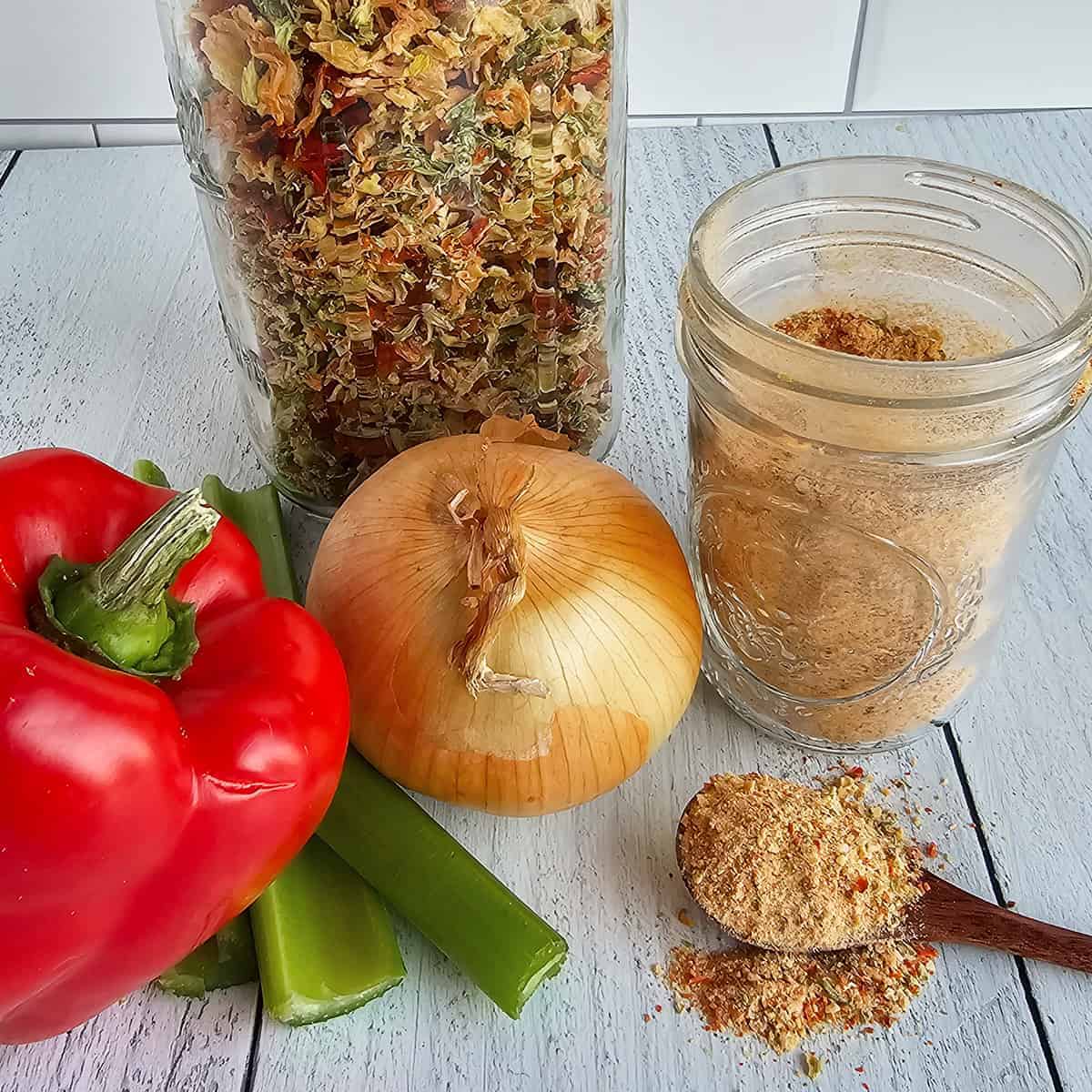
Holy Trinity Seasoning
I love to mix things up in my spice cabinet with new flavors. Since my family has lots of texture issues with certain foods, I find that it is easier to deliver flavors through a powder than as pieces.
So, I create spice blends that can be used for the flavor instead!
- Place dehydrated holy trinity into a spice grinder.
- Pulse until it forms a powder, being careful not to run too much at one time so that it doesn’t cause the powder to clump.
- Place powder onto a parchment paper-lined cookie sheet.
- Warm your oven to its lowest temperature and turn it off.
- Place the baking sheet inside to allow the powder to condition. This removes any moisture from the powder from the grinding process.
- Remove after 15 min and allow to cool.
- Store in a spice jar of your choice. This may clump if exposed to moisture, so use a moisture absorber or other anti-clump agent if you prefer. You can use on of the options found in How to Prevent Clumping in Dehydrated Foods.
- Use 1-2 tablespoons to be equivalent to approximately 2 cups of holy trinity.
You can add salt, black pepper, dehydrated garlic powder, chili powder, paprika, or other seasoning to make it all your own!

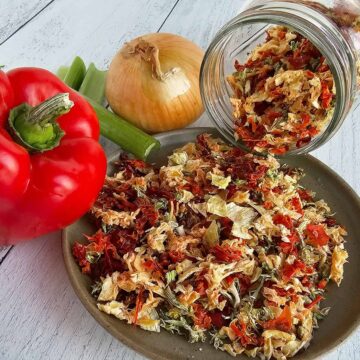
Dehydrate the Holy Trinity
Equipment
- Storage container
Ingredients
- 1 Cup Celery, diced This is a value that you can adjust to whatever you need 1 Part of each ingredient.
- 1 Cup Onion, diced
- 1 Cup Bell pepper, diced
Instructions
- Dice your vegetables.
- Blanch if you wish, but it is not necessary.
- Place onto your dehydrator racks and dry! The setting is 125°F / 52°C for 8-12 hours (approximately).
- Test for dryness. All pieces should be dry, hard, and not sticky.
- Condition.
- Store.
Darcy’s Tips
- Since there are texture issues, I make sure that I make pieces even smaller than typical so that they aren’t an issue while eating. I use a food processor to get small pieces instead of the typical diced ones.
- You can also mix all of the ingredients on your dehydrator trays to dry together instead of as separate ingredients to blend later.
- Try sweating your vegetables in a skillet (don’t caramelize them) to get a soft texture now that will give you more of an ‘instant’ use when rehydrated. This can be good for great meals-in-a-jar recipes that are more like ‘just add water’ recipes.
- Place finished dried holy trinity into a jar and shake once a day for about a week.
- If clumping happens, put it back into the dehydrator to dry more. If mold occurs, toss it all and sterilize your jar.
- If it does not clump or mold, store in an airtight container for up to two years.
- Place the amount you need in a container of water and allow it to soak for about 15 minutes. Alternatively, you can allow it to soak overnight in the fridge or gently simmer it in a saucepan of water or broth if you don’t plan on using the next option.
- Place the amount you need into a skillet on a medium-low setting. Add some water or broth and allow the celery, onion, and peppers to absorb the water as they rehydrate slowly, then sweat (gentle cooking) to prepare for the meal. You may add any seasoning you like during this process, I like to add a little butter at this point.
Nutrition
Nutritional information is an estimation only. Nutrient information for dehydrated foods is based on fresh. Use 1/4 of the servicing size for the same nutrient information. Thus 1 Cup of fresh fruit has the same sugars as 1/4 dried.
©ThePurposefulPantry. Photographs and content are copyright protected. Sharing of this recipe’s link is both encouraged and appreciated. Copying and/or pasting full recipes to any social media is strictly prohibited.

